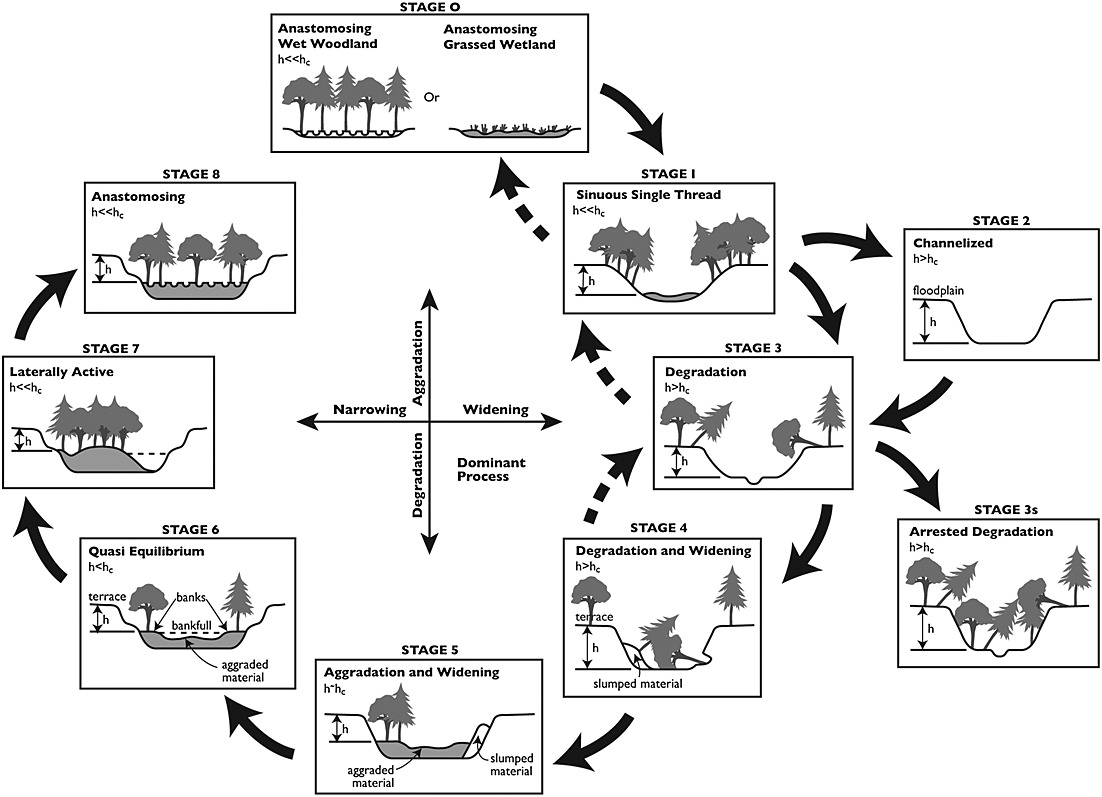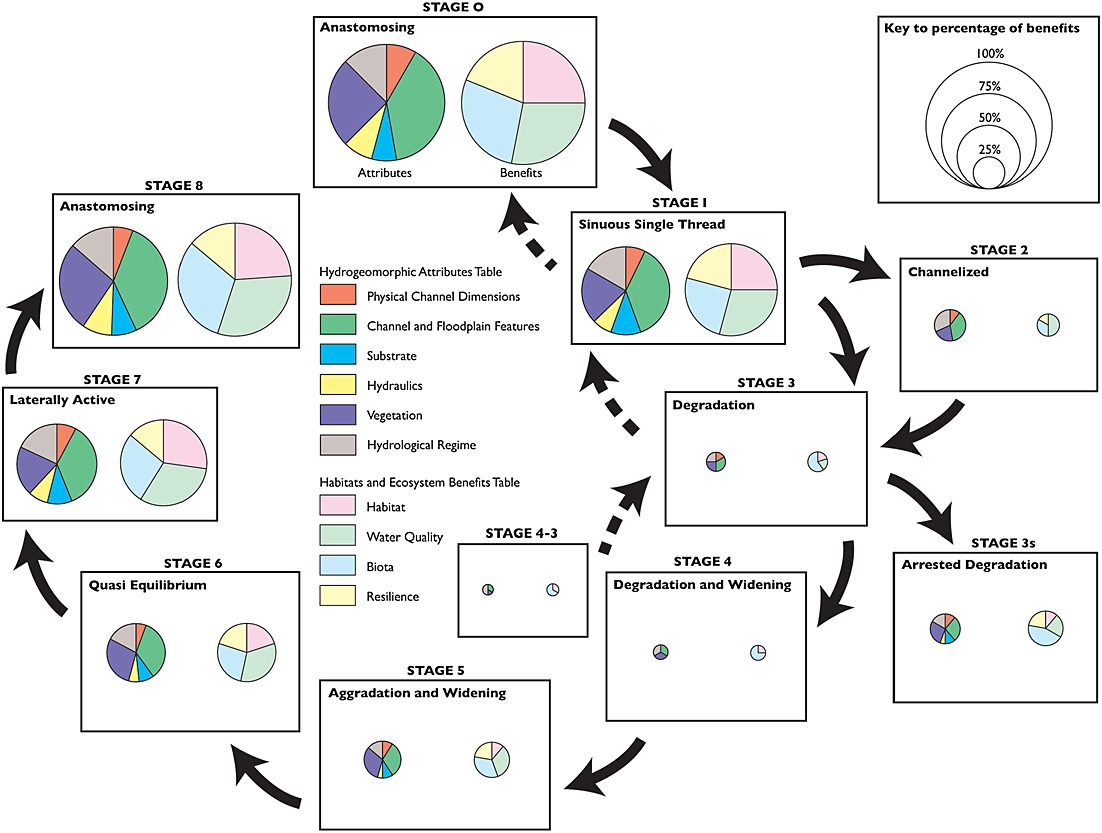Cluer and Thorne (2014) first coined the term Stage Zero for the preliminary natural step in the Stream Evolution Model. It had become apparent that previous channel change models were claiming to begin at a river’s “natural” state when in fact they were displaying examples of the degraded result of consistent long-term anthropogenic influence (Walter and Merritts, 2008; Major, 2008). Instead, it is argued that chains of Stage Zero wetlands, anastomosing or braided planforms, separated by valley confined transport reaches, make up natural river systems which can be visualised like a chain of beads.

The Stream Evolution Model developed by Cluer and Thorne (2014). Adding cyclical and Stage 0 elements to earlier channel change conceptual models. It should be noted that without restoration it may take decades to move between stages of the model and it is possible to get caught in anthropogenically defined reaches such as channelized reaches.
A rose by any other name
As well as being a more natural state at some sites, Cluer and Thorne also stipulated that by providing multiple degrees of freedom for vegetation, water, and sediment to interact at a site, Stage Zero reaches would also provide the greatest ecosystem benefits. To some extent, Stage Zero can represent a confluence of practises and research tracks under a number of different terms, which to various extents incorporate the same ideals as a Stage Zero target. Valley floor resetting, flood plain reconnection, beaver meadows and leaky dams are all examples of these restoration processes and paradigms which incorporate some elements of a Stage Zero goal. These are exemplified by the case studies under the resources tab.

Habitat and ecosystem benefits provided in each stage of the Revised Channel Evolution Model. Each stage is represented by two pie charts whose diameters signify the relative percentage of maximum benefits. For each stage, the pie chart on the left summarizes the richness and diversity of the hydromorphic attributes, whereas the pie chart on the right summarizes the associated habitat and ecosystem benefits
Risk management
As will become apparent whilst viewing the resources provided and considering other Stage Zero streams, it is not applicable everywhere. Many of the early advocates will argue that there are multiple situations and scales with which Stage Zero can be used where it might otherwise be dismissed, but they will also be the first to admit that it is not suitable in every environment. In fact, as a process-based goal it is reliant on repetitions of transport and depositional reaches to provide sediment input to the Stage Zero reaches.
Stage Zero should only be implemented where there is a geomorphic control above and below the project in order to protect against head cuts or early erosion at the site. This can be seen in the Geomorphic grade line technique created by Paul Powers which provides a scientific method for defining the gradient when resetting a whole floodplain. Moreover, appropriate materials are required to reduce flow velocity and limit erosion in the early stages of a project before the site is a self sustaining ecosystem.
There is also a need to structure projects using the correct materials and processes for the biome and site being considered. Beavers have proven heavily destructive in the wrong biome whilst Natural Flood Management comes with the risk of synchronising flood peaks if not fully understood. Hopefully, this website and the links within will help provide the contacts and knowledge to maximise the potential and minimise the risks of Stage Zero projects. In doing so, plenty of research calls for the need to include all stakeholders in river restoration of this type. Bringing together scientists, practitioners and the public is even more important in the case of Stage Zero.